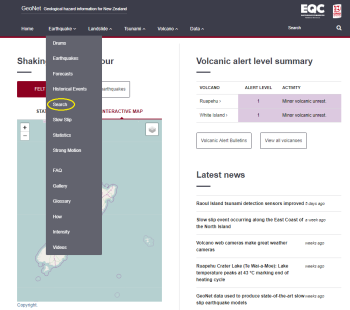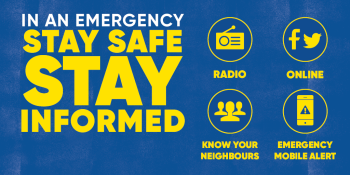
I want to know when the biggest earthquake was in my area. How do I find out?
We’re often asked by people what the biggest magnitude earthquake recorded in their region was- or if the jolts, shakes and rumbles they have been feeling is an earthquake swarm.
A question we pose back is – Have you used our Quake Search Tool?
For obvious reasons there has been heightened interest in NZ about our earthquakes. Quite a few of you have taken a step to inform yourselves by downloading our free app - which allows you to receive notifications about the earthquakes in New Zealand when they happen (download the current version here for IOS and here for Android).
But did you know that there is also an awesome interactive tool that allows you to search and build queries using the entire earthquake catalogue? Not many people do.
So, something we have been developing in the background is a ‘how to’ of our Quake Search. This is a step by step guide to educate you on how it works so that you can find the information you want.
The earthquake catalogue goes back to the 1930’s and is where all the technical information about earthquakes is stored. Think about that for a moment. New Zealand has about 20,000 earthquakes a year. That is a HUGE amount of data and you can explore it.
Try the guide for Quake Search- it’s the ‘?’ at the bottom right of this page. Alternatively you can get to the Quake Search tool from the home page- it's under the earthquake tab.
The reason we’re bringing this ‘how to’ to the surface is because today is the kick-off day for the Ministry of Civil Defence & Emergency Management's annual Get Ready Week- a week centred around the International Day for Disaster Reduction. This year’s theme is Stay Safe, Stay Informed and part of the focus is about encouraging you to think about where you get your information from during an event.
That’s where GeoNet comes in. We keep a close watch on earthquakes, volcanic activity, tsunami and large landslides and also provide information to NZ’rs when these things start to play up.
We’re running with the theme and we want you to know how you can be informed with GeoNet. Right on the home page is where you will find shaking in the last hour, latest news, and the volcanic alert level summary.
The volcanic alert level summary is New Zealand's official source of volcano status information. This is where you will find the current Volcanic Alert Level (VAL) and summaries of a volcano's status and recent events. They can indicate if activity is increasing, decreasing, or in a steady state. They are there to inform you about developing, or expected problems.
Over the course of this week we challenge you to find time to dive into the GeoNet website and explore. You can also follow us on Facebook and Twitter because when New Zealand's geohazards stir into action we post information on social media too.

